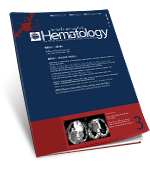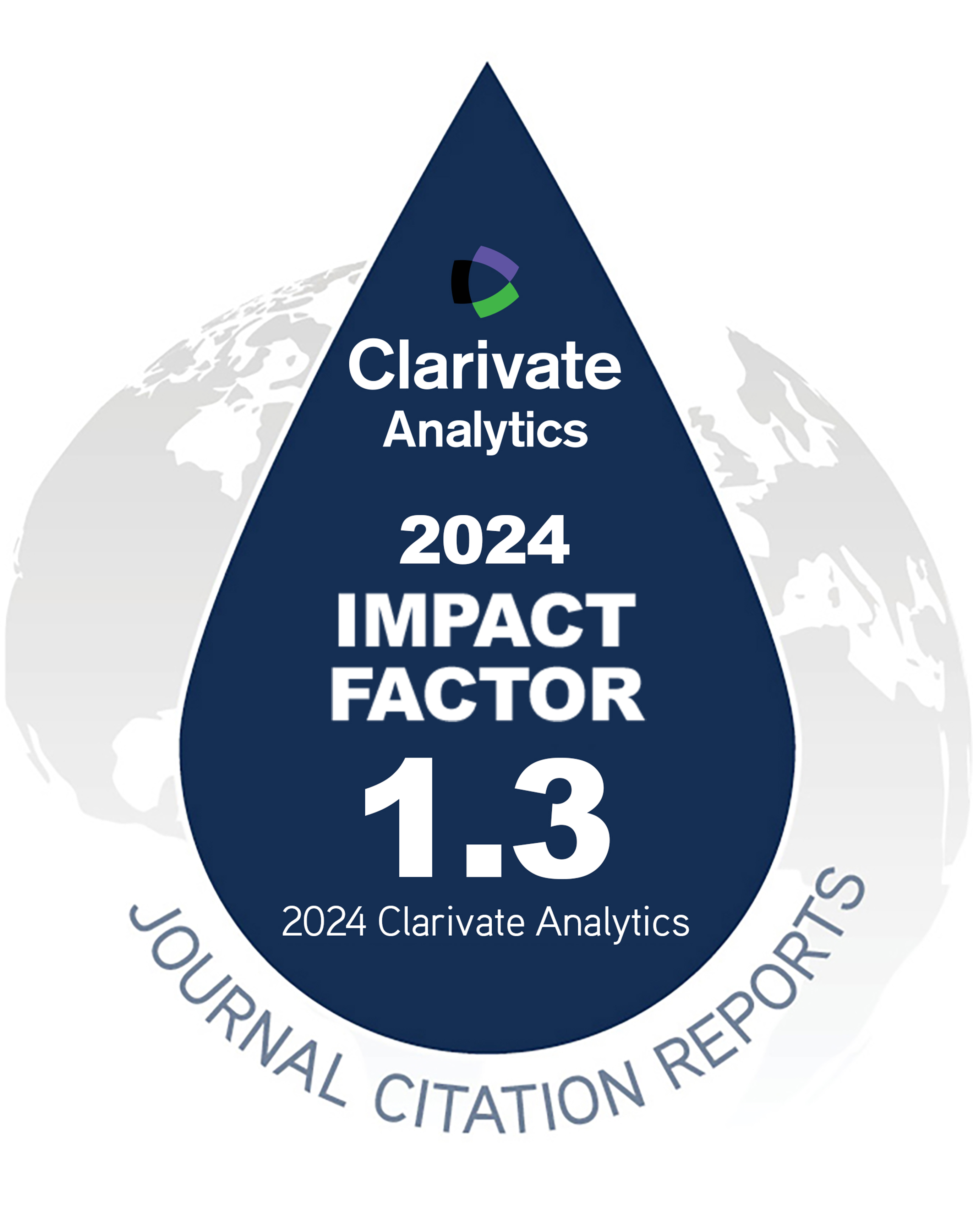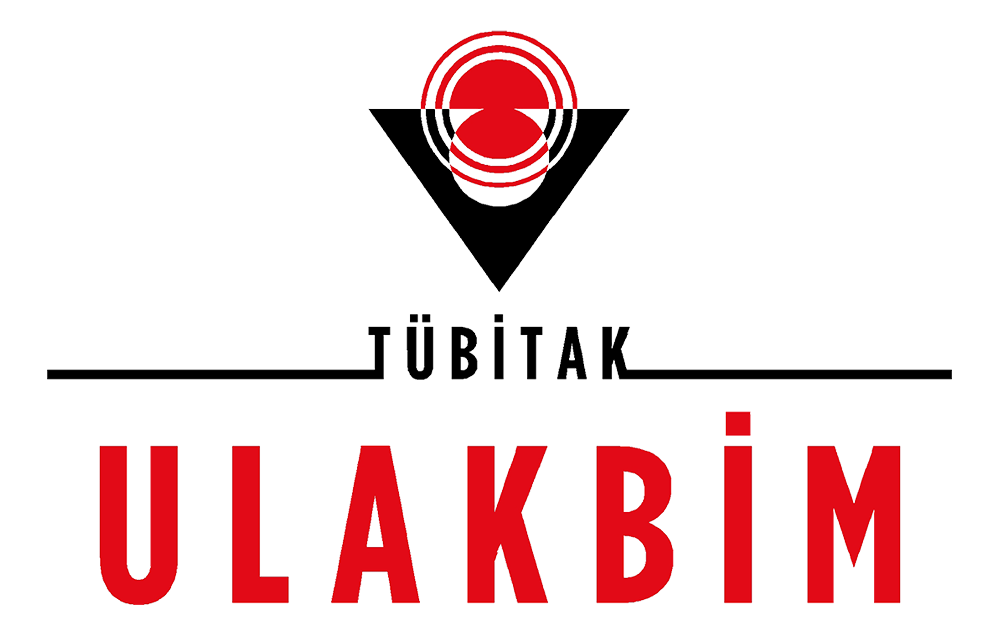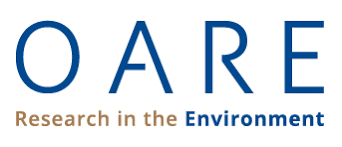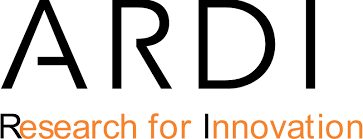INSTRUCTIONS FOR AUTHORS
The Turkish Journal of Hematology accepts invited review articles, research articles, brief reports, letters to the editor, and hematological images that are relevant to the scope of hematology, on the condition that they have not been previously published elsewhere. Basic science manuscripts, such as randomized, cohort, cross-sectional, and case control studies, are given preference. Articles consisting solely of computational analyses and meta-analyses without validation with primary biological samples (blood, bone marrow, stem cells) are not within the scope of this journal. All manuscripts are subject to editorial revision to ensure they conform to the style adopted by the journal. The reviewing system is double-blind.
Manuscripts should be prepared according to ICMJE guidelines. Original manuscripts require a structured abstract. Label each section of the structured abstract with the appropriate subheading (Objective, Materials and Methods, Results, and Conclusion). Letters to the editor do not require an abstract. Research or project support should be acknowledged as a footnote on the title page. Technical and other assistance should be provided on the title page.
Submissions and publication are free of charge.
Original Manuscripts
Title Page
Title: The title should provide important information regarding the manuscript’s content. The title must specify that the study is a cohort study, cross-sectional study, case control study, or randomized study (i.e. Cao GY, Li KX, Jin PF, Yue XY, Yang C, Hu X. Comparative bioavailability of ferrous succinate tablet formulations without correction for baseline circadian changes in iron concentration in healthy Chinese male subjects: A single-dose, randomized, 2-period crossover study. Clin Ther. 2011; 33: 2054-2059).
The title page should include the authors’ names, degrees, and institutional/professional affiliations and a short title, abbreviations, keywords, financial disclosure statement, and conflict of interest statement. If a manuscript includes authors from more than one institution, each author’s name should be followed by a superscript number that corresponds to their institution, which is listed separately. Please provide contact information for the corresponding author, including name, e-mail address, and telephone and fax numbers.
Important Notice: The title page should be submitted separately.
Running Head: The running head should not be more than 40 characters, including spaces, and should be located at the bottom of the title page.
Word Count: The word count of a manuscript, excluding the abstract, acknowledgments, figure and table legends, and references, should not exceed 2500 words. The word count of an abstract should not exceed 300 words.
Conflict-of-Interest Statement: To prevent potential conflicts of interest from being overlooked, this statement must be included in each manuscript. In case there are conflicts of interest, every author should complete the ICMJE general declaration form.
Abstract and Keywords: The second page should include an abstract that does not exceed 300 words. For manuscripts sent by authors in Türkiye, a title and abstract in Turkish are also required. As most readers read the abstract first, it is critically important. Moreover, as various electronic databases integrate only abstracts into their index, important findings should be presented in the abstract.
Objective: The abstract should state the objective (the purpose of the study and hypothesis) and summarize the rationale for the study.
Materials and Methods: Important methods should be written respectively.
Results: Important findings and results should be provided here.
Conclusion: The study’s new and important findings should be highlighted and interpreted.
Other types of manuscripts, such as reviews, perspectives, and editorials, will be published according to uniform requirements. Provide 3-10 keywords below the abstract to assist indexers. Use terms from the
Index Medicus Medical Subject Headings List (https://www.nlm.nih.gov/mesh/meshhome.html). For randomized studies, a CONSORT abstract should be provided (http://www.consort-statement.org/).
Introduction: The introduction should include an overview of the relevant literature presented in summary form (one page), and the issues that remain interesting, unique, problematic, relevant, or unknown about the topic must be specified. The introduction should conclude with the rationale for the study, its design, and its objective(s).
Materials and Methods: Clearly describe the selection of observational or experimental participants, such as patients, laboratory animals, and controls, including inclusion and exclusion criteria and a description of the source population. Identify the methods and procedures in sufficient detail to allow other researchers to reproduce your results. Provide references to established methods (including statistical methods), provide references to brief modified methods, and provide the rationale for using them and an evaluation of their limitations. Identify all drugs and chemicals used, including generic names, doses, and routes of administration. The section should include only information that was available at the time the plan or protocol for the study was devised (https://www.strobe-statement.org/fileadmin/Strobe/uploads/checklists/STROBE_checklist_v4_combined.pdf).
Statistics: Describe the statistical methods used in enough detail to enable a knowledgeable reader with access to the original data to verify the reported results. Statistically important data should be given in the text, tables, and figures. Provide details about randomization, describe treatment complications, provide the number of observations, and specify all computer programs used.
Results: Present your results in logical sequence in the text, tables, and figures. Do not present all the data provided in the tables and/or figures in the text; emphasize and/or summarize only important findings, results, and observations in the text. For clinical studies provide the number of samples, cases, and controls included in the study. Discrepancies between the planned number and obtained number of participants should be explained. Comparisons and statistically important values (i.e. p value and confidence interval) should be provided.
Discussion: This section should include a discussion of the data. New and important findings/results and the conclusions they lead to should be emphasized. Link the conclusions with the goals of the study, but avoid unqualified statements and conclusions not completely supported by the data. Do not repeat the findings/results in detail; important findings/results should be compared with those of similar studies in the literature, along with a summarization. In other words, similarities or differences in the obtained findings/results with those previously reported should be discussed.
Study Limitations: Limitations of the study should be detailed. In addition, an evaluation of the implications of the obtained findings/results for future research should be outlined.
Conclusion: The conclusion of the study should be highlighted.
References
Cite references in the text, tables, and figures with numbers in square brackets. Number references consecutively according to the order in which they first appear in the text. Journal titles should be abbreviated according to the style used in Index Medicus (consult List of Journals Indexed in Index Medicus). Include among the references any paper accepted for publication but not yet published, designating the journal followed by "in press."
Examples of References:
1. List all authors.
Deeg HJ, O’Donnel M, Tolar J. Optimization of conditioning for marrow transplantation from unrelated donors for patients with aplastic anemia after failure immunosuppressive therapy. Blood. 2006;108:1485-1491.
2. Organization as author
Royal Marsden Hospital Bone Marrow Transplantation Team. Failure of syngeneic bone marrow graft without preconditioning in post-hepatitis marrow aplasia. Lancet. 1977;2:742-744.
3. Book
Wintrobe MM. Clinical Hematology, 5th ed. Philadelphia, Lea & Febiger, 1961.
4. Book Chapter
Perutz MF. Molecular anatomy and physiology of hemoglobin. In: Steinberg MH, Forget BG, Higs DR, Nagel RI (eds). Disorders of Hemoglobin: Genetics, Pathophysiology, Clinical Management. New York, Cambridge University Press, 2000.
5. Abstract
Drachman JG, Griffin JH, Kaushansky K. The c-Mpl ligand (thrombopoietin) stimulates tyrosine phosphorylation. Blood. 1994;84:390a (abstract).
6. Letter to the Editor
Rao PN, Hayworth HR, Carroll AJ, Bowden DW, Pettenati MJ. Further definition of 20q deletion in myeloid leukemia using fluorescence in situ hybridization. Blood. 1994;84:2821-2823.
7. Supplement
Alter BP. Fanconi’s anemia, transplantation, and cancer. Pediatr Transplant. 2005;9(Suppl 7):81-86.
Brief Reports
Abstract length: Not to exceed 150 words.
Article length: Not to exceed 1200 words.
Introduction: State the purpose and summarize the rationale for the study.
Materials and Methods: Clearly describe the selection of the observational or experimental participants. Identify the methods and procedures in sufficient detail. Provide references to established methods (including statistical methods), provide references to brief modified methods, and provide the rationale for their use and an evaluation of their limitations. Identify all drugs and chemicals used, including generic names, doses, and routes of administration.
Statistics: Describe the statistical methods used in enough detail to enable a knowledgeable reader with access to the original data to verify the reported findings/results. Provide details about randomization, describe treatment complications, provide the number of observations, and specify all computer programs used.
Results: Present the findings/results in a logical sequence in the text, tables, and figures. Do not repeat all the findings/results in the tables and figures in the text; emphasize and/or summarize only those that are most important.
Discussion: Highlight the new and important findings/results of the study and the conclusions they lead to. Link the conclusions with the goals of the study, but avoid unqualified statements and conclusions not completely supported by your data.
Invited Review Articles
Abstract length: Not to exceed 300 words.
Article length: Not to exceed 4000 words.
Review articles should not include more than 100 references. Reviews should include a conclusion, in which a new hypothesis or study about the subject may be posited. Do not publish methods for literature search or level of evidence. Authors who submit review articles should have already published research articles on the relevant subject. The study’s new and important findings should be highlighted and interpreted in the Conclusion section. There should be a maximum of two authors for review articles.
Review articles are solicited by the Editor in Chief. Authors wishing to submit an unsolicited review article should contact the Editor in Chief prior to submission in order to screen the proposed topic for relevance and priority.
Perspectives in Hematology
“Perspectives” are invited articles discussing significant topics relevant to hematology. They are more personal than a review article. Authors wishing to submit a Perspectives in Hematology article should contact the Editor in Chief prior to submission in order to screen the proposed topic for relevance and priority. These submissions must advance the hot subjects of experimental and/or clinical hematology beyond the articles previously published or in press in TJH. Perspective papers should meet the restrictive criteria of TJH regarding unique scientific and/or educational value, which will impact and enhance clinical hematology practice or the diagnostic understanding of blood diseases. Priority will be given to such manuscripts based upon the prominence, significance, and timeliness of the content. The submitting author must already be an expert with recognized significant published scientific experience in the specific field related to the “Perspectives” article. There should be a maximum of two authors per "Perspectives" submission.
These manuscripts are published by invitation only.
Abstract length: Not to exceed 150 words.
Article length: Not to exceed 1000 words.
References: Should not include more than 50 references.
Images in Hematology
Article length: Not exceed 200 words.
Authors can submit for consideration illustrations or photos that are interesting, instructive, and visually attractive, along with a few lines of explanatory text and references. Images in Hematology can include no more than 200 words of text, 5 references, and 3 figures or tables. No abstract, discussion, or conclusion is required. A brief running title is required.
Letters to the Editor
Article length: Not to exceed 500 words.
Letters can include no more than 500 words of text, 5-10 references, and 1 figure or table. No abstract is required, but please include a brief title. The total number of authors is usually limited to a maximum of 5 for letters to the editor.
Tables
Supply each table in a separate file. Number tables according to the order in which they appear in the text and supply a brief caption for each. Give each column a short or abbreviated heading. Write explanatory statistical measures of variation, such as standard deviation or standard error of mean. Be sure that each table is cited in the text.
Figures
Figures should be professionally drawn and/or photographed. Authors should number figures according to the order in which they appear in the text. Figures include graphs, charts, photographs, and illustrations. Each figure should be accompanied by a legend that does not exceed 50 words. Use abbreviations only if they have been introduced in the text. Authors are also required to provide the level of magnification for histological slides. Explain the internal scale and identify the staining method used. Figures should be submitted as separate files, not in the text file. High-resolution image files are not preferred for initial submission as the file sizes may be too large. The total file size of the PDF for peer review should not exceed 5 MB.
Authorship
Each author should have participated sufficiently in the work to assume public responsibility for the content. Any portion of a manuscript that is critical to its main conclusions must be the responsibility of at least 1 author.
Contributor’s Statement
All submissions should contain a contributor’s statement page. Each author should have made substantial contributions to the idea and design, acquisition of data, or analysis and interpretation of findings. All persons designated as an author should qualify for authorship, and all those that qualify should be listed. Each author should have participated sufficiently in the work to take responsibility for appropriate portions of the text.
Acknowledgments
Acknowledge support received from individuals, organizations, grants, corporations, and any other source. For work involving a biomedical product or potential product partially or wholly supported by corporate funding, a note stating, “This study was financially supported (in part) with funds provided by (company name) to (authors’ initials)”, must be included. Grant support, if received, needs to be stated and the specific granting institutions’ names and grant numbers provided when applicable.
Authors are expected to disclose on the title page any commercial or other associations that might pose a conflict of interest in connection with the submitted manuscript. All funding sources that supported the work and the institutional and/or corporate affiliations of the authors should be acknowledged on the title page.
Conditions of Publication
All authors are required to affirm the following statements before their manuscript is considered: 1. The manuscript is being submitted only to the Turkish Journal of Hematology; 2. The manuscript will not be submitted elsewhere while under consideration by the Turkish Journal of Hematology; 3. The manuscript has not been published elsewhere, and should it be published in the Turkish Journal of Hematology it will not be published elsewhere without the permission of the editors (these restrictions do not apply to abstracts or to press reports for presentations at scientific meetings); 4. All authors are responsible for the manuscript’s content; 5. All authors participated in the study concept and design, analysis and interpretation of the data, and drafting or revising of the manuscript and have approved the manuscript as submitted. In addition, all authors are required to disclose any professional affiliation, financial agreement, or other involvement with any company whose product figures prominently in the submitted manuscript.
Authors of accepted manuscripts will receive electronic page proofs and are responsible for proofreading and checking the entire article within two days. Failure to return the proof in two days will delay publication. If the authors cannot be reached by email or telephone within two weeks, the manuscript will be rejected and will not be published in the journal.
Copyright
At the time of submission all authors will receive instructions for submitting an online copyright form. No manuscript will be considered for review until all authors have completed their copyright form. Please note that it is our practice not to accept copyright forms via fax, e-mail, or postal service unless there is a problem with the online author accounts that cannot be resolved. Every effort should be made to use the online copyright system. Corresponding authors can log in to the submission system at any time to check the status of any co-author’s copyright form.
Note: We cannot accept any copyright that has been altered, revised, amended, or otherwise changed. Our original copyright form must be used as is.
Author Rights:
Authors can use their articles, in full or in part, for scholarly, non-commercial purposes and with the condition of attribution such as:
- Use by an author in the author’s classroom education (including distribution of documents, paper or electronic)
- Distribution of documents (including through e-mail) to known research colleagues for their personal use (but not for commercial use)
- Inclusion in a thesis or dissertation (provided that this is not to be published commercially)
- Use in a subsequent compilation of the author’s work
- Preparation of other derivative works (but not for commercial use)
- Otherwise using or re-using portions or excerpts in other works
Units of Measurement
Measurements should be reported using the metric system, according to the International System of Units (SI). Consult the SI Unit Conversion Guide, New England Journal of Medicine Books, 1992.
An extensive list of conversion factors can be found at https://www.nist.gov/itl/ssd/software-quality-group/metrics-and-measures#Metrics_vs._Measures. For more details, see the examples for CBC at https://www.amamanualofstyle.com/page/si-conversion-calculator.
Abbreviations and Symbols
Use only standard abbreviations. Avoid abbreviations in the title and abstract. The full term for an abbreviation should precede its first use in the text, unless it is a standard abbreviation. All acronyms used in the text should be defined at first mention, followed by the abbreviation in parentheses; thereafter, only the acronym should appear in the text. Acronyms may be used in the abstract if they occur 3 or more times therein, but must be reintroduced in the body of the text. Generally, abbreviations should be limited to those defined in the AMA Manual of Style, current edition. A list of each abbreviation (and the corresponding full term) used in the manuscript must be provided on the title page.
Search Engine Optimization Policy
Authors should follow the relevant guidelines to enhance the visibility of their articles.
Keywords should consist of terms from the Medical Subject Headings (MeSH). MeSH is a standardized index of subject headings used in medical literature and is recommended by many international journals for selecting keywords.
https://www.nlm.nih.gov/mesh/meshhome.html
Use of Large Language Models and Generative AI Tools
"AI tools cannot meet the requirements for authorship as they cannot take responsibility for the submitted work. As non-legal entities, they cannot assert the presence or absence of conflicts of interest nor manage copyright and license agreements. Authors who use AI tools in the writing of a manuscript, production of images or graphical elements of the paper, or in the collection and analysis of data, must be transparent how the AI tool was used and which tool was used. Authors are fully responsible for the content of their manuscript, even those parts produced by an AI tool, and are thus liable for any breach of publication ethics.” COPE Position Statement on Authorship and AI Tools. Detailed information about the statement can be accessed at https://publicationethics.org/cope-position-statements/ai-author.
After reviewing the COPE statement given above, the editors of the Turkish Journal of Hematology decided that papers should include a statement in a section titled “Declaration Regarding the Use of AI and AI-Assisted Technologies” to inform readers if AI or AI-assisted tools were used in the writing process. It is important to remember that all authors are responsible for the content of their work. This declaration does not apply to the use of basic tools for checking grammar, spelling, or references (such as Mendeley, EndNote, Zotero, and others). If there is nothing to declare, there is no need to add a statement.
It is suggested that authors follow this format when preparing their statement:
During the preparation of this work, the author(s) utilized [NAME OF TOOL(S) USED] to [DESCRIPTION OF HOW THE TOOL(S) WERE UTILIZED AND HOW THE VALIDITY OF THE OUTPUTS WAS EVALUATED]. After carefully reviewing and editing the content as necessary, full responsibility for the publication's content is taken by the author(s). This incorporation of AI tool usage primarily impacted [SPECIFY WHICH ASPECTS OF THE STUDY, ARTICLE CONTENTS, DATA, OR SUPPORTING FILES WERE AFFECTED/GENERATED].
Example:
During the preparation of this work, the author(s) utilized OpenAI's ChatGPT to generate summaries of research articles related to the topic. These summaries were evaluated by comparing them to manually written summaries by experts in the field. Upon confirming the accuracy and relevance of the generated summaries, they were integrated into the literature review section of the manuscript. After carefully reviewing and editing the content as necessary, full responsibility for the publication's content is taken by the author(s). This incorporation of AI tool usage primarily impacted the efficiency of the literature review process and the comprehensiveness of the gathered research insights.
Online Manuscript Submission Process
The Turkish Journal of Hematology uses submission software powered by JournalAgent. The website for submissions to the Turkish Journal of Hematology is https://jag.journalagent.com/tjh/. This system is quick and convenient for both authors and reviewers.
Setting up an Account
To submit a manuscript, new users must register and provide their account details. Please log in, or if this is your first time, click the “New User” button. To create a new account: After clicking “New User,” fill in all the required fields. Your email address is especially important. Once you have entered all the necessary information, click “Save” to complete the registration.
If you already have an account but have forgotten your login details, go to the “Forgot your password?” section in the journal’s online submission system. Enter your email address and “Write confirmation code.” The system will then automatically send you a username and a new temporary password.
Detailed instructions and support are available on the website, and you can receive a username and password during your first visit. Full support is provided to authors. If you have any questions regarding manuscript submission to the journal, you may contact the journal manager at [email protected]. For JournalAgent customer support, please click the link “Technical problems or questions: Please contact Author Support” located on the login page of the online submission system.
The Electronic Submission Process
Log in to the Author Center. After logging in, go to the “Author Section” in the menu bar, then select “Submit New Manuscript.” Complete the “Checklist” section. The manuscript submission process in the system consists of a total of 9 steps. On each screen, enter the required information and click “Save and Continue” to save your work and proceed to the next step.
Upload Files
Click on the “Choose File” button and locate the file on your computer. In the “File Tag” box above the “Choose File” button, enter the name of the file. When you have selected all the files you want to upload, click the "Upload" button. Review your submission before sending it to the journal. Click the "Send this manuscript to the Editorial Board" button when you are finished reviewing. You can use JournalAgent at any time to check the status of your submission. The journal’s editorial office will inform you by e-mail once a decision has been made. Once your manuscript has been received by the journal, a technical check will be performed by the editorial office. If revisions are required, the author(s) will be asked to make the necessary corrections. If no revisions are needed, the manuscript will be forwarded to the Editor in Chief.
The Review Process
Each manuscript submitted to the Turkish Journal of Hematology is subject to an initial review by the editorial office in order to determine if it is aligned with the journal’s aims and scope and complies with essential requirements. Manuscripts sent for peer review will be assigned to one of the journal’s associate editors that has expertise relevant to the manuscript’s content. After review, the reviewers' comments are sent to the associate editor, who then forwards their comments to the editor-in-chief for a preliminary decision. At this stage, based on the feedback from reviewers, manuscripts can be accepted or rejected, or revisions can be recommended. Following initial peer review, articles judged worthy of further consideration often require revision. Revised manuscripts generally must be received within 1 month of the date of the initial decision. Extensions must be requested from the associate editor at least 2 weeks before the 1-month revision deadline expires; the Turkish Journal of Hematology will reject manuscripts that are not received within the 1-month revision deadline. Manuscripts with extensive revision recommendations will be sent for further review, usually by the same reviewers, upon their re-submission. All accepted manuscripts are sent to a statistical and English language editor before publishing. Finally, the technical editor undertakes a final edit and a marked-up copy will be e-mailed to the corresponding author for review and to make any final adjustments.
Submission of Revised Papers
When revising a manuscript based on the reviewers’ and editor's feedback, please insert all changed text in red. Please do not use track changes, as this feature can make reading difficult. To submit revised manuscripts, please log into your author center at JournalAgent. Your manuscript will be stored under “Manuscripts.” When you click on the link, the system will guide you to create a revision. A revised manuscript number will be created for you; you will then continue by clicking on "Submission" for your revised manuscript. You will then be guided through a submission process very similar to that for new manuscripts. You will be able to amend any details you wish. In Step 9, upload the documents related to your revised manuscript. You will then need to review your paper as a PDF and click the "Send this manuscript to the Editorial Board" button. Your revised manuscript will have the same ID number as the original version, but with the addition of (1) at the end, such as TJH-01112 for an original and TJH-01112 (1), indicating a first revision; subsequent revisions will end with (2), (3), and so on. Please do not submit a revised manuscript as a new paper, as revised manuscripts are processed differently. If you click on the "Send this manuscript to the Editorial Board" button and receive a message stating that the revision option has expired, please contact the Editorial Assistant at [email protected] to reactivate the option.
English Language and Statistical Editing
All manuscripts are professionally edited by an English language editor prior to publication.
After papers have been accepted for publication, manuscript files are forwarded to the statistical and English language editors before publishing. Editors will make changes to the manuscript to ensure it adheres to TJH requirements. Significant changes or concerns are referred to corresponding authors for editing.
Online Early
The Turkish Journal of Hematology publishes abstracts of accepted manuscripts online in advance of their publication. After an article has been accepted and edited, the authors have submitted the final corrections, and all changes have been applied, the article will be published online within 10 days. At that time the manuscript will receive a Digital Object Identifier (DOI) number. Authors of accepted manuscripts will receive electronic page proofs directly from the printer and are responsible for proofreading and checking the entire manuscript, including tables, figures, and references. Page proofs must be returned within 48 hours to avoid delays in publication.
Preprint Policy
The Turkish Journal of Hematology does not accept manuscripts that have been previously submitted to or posted on preprint servers. Any manuscript that has been made publicly available as a preprint, regardless of the platform or DOI assignment, is considered to have undergone prior publication and is therefore ineligible for submission to this journal.
To ensure adherence to this policy, authors are required to confirm during submission that their manuscript has not been deposited on any preprint server or made publicly available in any similar format prior to submission.

